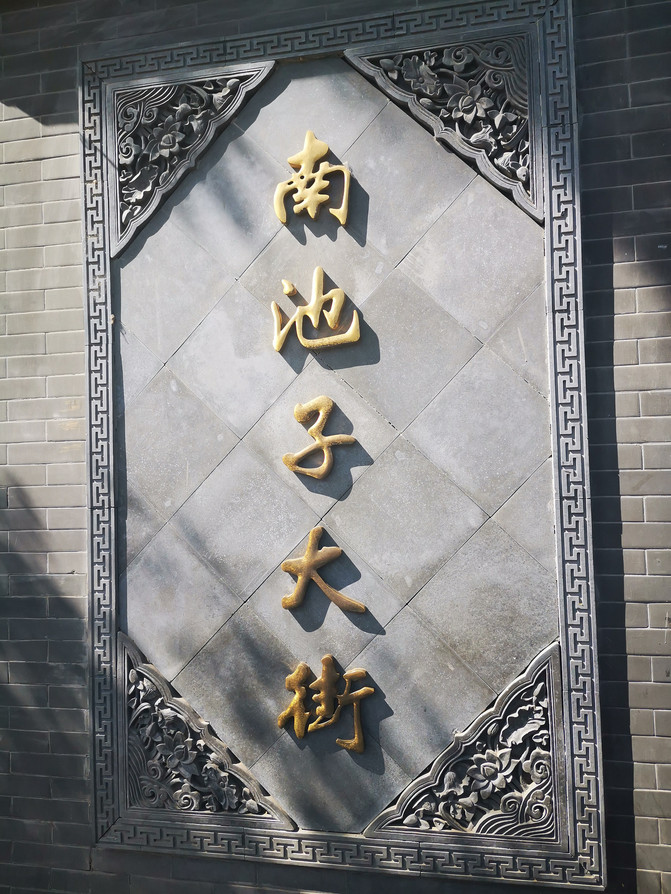Walk into Nanchizi Street and Beichizi Street in Beijing
To the east of the Forbidden City there is a street running from north to south, bounded by Donghuamen. To the south, it is called Nanchizi Street and leads to Chang 'an Street. To the north, it is called Beichizi Street and leads to May 4th Street and Jingshan Front Street.
This seemingly ordinary road was closely connected to the inner courtyard of the Imperial Palace during the Ming and Qing Dynasties. Its status was extraordinary and belonged to a royal forbidden area. It was not until after the Republic of China that civilians moved here to live. After liberation, some celebrities or cadres also lived nearby. Therefore, there is still some mystery here.
I had to go to the Working People's Cultural Palace on May 5. Due to passenger flow restrictions, I had already reached the Wumen Gate but couldn't get in. I had to go around Nanchizi Street and enter from the east gate of the Cultural Palace. Of course, when I came out of the Working People's Cultural Palace, I had to take the west gate. After passing through Donghuamen and arriving on this street, I saw Beichizi Street.
The scenery on the street is still very good. The trees are lined with trees, and the flowers beside the road give people the feeling of green, fat, red and thin. Whether it is exaggerated or understated, I feel that it is always suitable for heavy makeup here. The old buildings on both sides facing the street have been repaired and look no longer messy or dilapidated, and my mood will naturally feel better. I also want to see the surrounding ruins and ancient buildings on the way.
Pudu Temple was first discovered and walked along Hutongs such as Pudu Temple West Lane. During the Ming Dynasty, this was part of the "East Garden". Emperor Yingzong of the Ming Dynasty once lived here. Now there are some luxurious courtyard houses. I don't know whose houses they belong to. Among them, the Gaode map of Courtyard No. 66 shows Mei Baojiu's former residence. The appearance is very spectacular, and the gate building is also very well built. There is no door open, so it is unclear what the inside situation is.
Pudu Temple was once the residence of Dorgon, but later the royal family changed it into a Tibetan Buddhist holy place dedicated to Maha Kara, a war god with three heads and six arms. This place was once used as land for troops, schools, and residents. Only the mountain gate, main hall, and abbot's courtyard are well preserved. Now they have been renovated and basically form a street center park. A statue of Dorgon has also been built in front of the mountain gate, which is estimated to be used to attract more tourists.
Further south, there is the Emperor's History Library, which was an archive from the Ming and Qing Dynasties. I didn't know if it would be open, so I didn't go there. Walking west after passing the intersection not far from Daoxiang Village, you will find the East Gate of the Working People's Cultural Palace. I took a photo when I passed by the entrance of the Chinese People's Foreign Affairs Association.
After coming out of the Working People's Cultural Palace, I came to Beichizi Street.
A very important place on Beichizi Street is Chen Duxiu's former residence and the former site of the editorial department of "New Youth" magazine. Chen Duxiu's former residence is on the campus of Beijing No. 27 Middle School. Unfortunately, it is not open. It is gratifying that I met several here. Young people who came to pay their respects. These are all educated people. I met a security guard at the entrance of No. 27 Middle School. I asked if I could go in and visit Chen Duxiu's former residence. He was very unfriendly and blunt and said,"Of course not. Let alone holidays, you can't visit even in normal times." You can just say no, why do this? This is an uneducated person.
On the street, I saw a "Prand" shop with the words "Beicchi Grain Store" engraved on it. It has a history of decades. Now people under the age of 30 are very unfamiliar with grain stores. Now they don't need to go to the grain store to buy grain every month. I think this is a witness of history and should be protected.
There is a Western-style building at No. 45 Beichizi Street, with a gorgeous appearance and attractive European characteristics.
To the north, there is also the former site of Ninghe Temple, which is now the location of Dengshikou Primary School. Ninghe Temple is one of the eight temples outside the Forbidden City. It is a place where the cloud god is sacrificed. It was built during the Yongzheng period of the Qing Dynasty.
There is also Xuanren Temple at the northernmost end. Xuanren Temple is dedicated to the wind god, also known as the "wind temple", and was built during the Yongzheng period of the Qing Dynasty.
The north end of Beichizi Street faces Jingshan Front Street to the west and May 4th Street to the east. To the west is the northeast corner of the Forbidden City. There are many rows of people taking wedding photos on Jiaolou and Beichizi Street, which shows that the scenery here is still very personalized. I am also happy for young people here to take photos to their heart's content. People in different eras have different consumption concepts. Looking across the mountain, consumption to their heart's content is probably good for economic development. If we don't spend money, the economy may be a dead water.






















































Author: Written by Wan Jun of the Song Dynasty on Sunday, May 9, 2021
Next Article:Pilgrimage to the capital, looking back on the humanistic spirit and the rise and fall of the times
